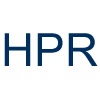It’s not easy to quickly rank stocks with dividends because no 5 or even 10 data points can tell you if a stock is worth buying or if it will perform in the future. When it comes to dividend statistics we only have history to guide us. Sometimes that can be a very beneficial factor. For example companies that have a history of growing dividends and maintaining low payout ratios can be safer investments than high flying dividend yielding stocks.
The Dividend Ladder uses the Historical Performance Rating (HPR) to determine what the best dividend stocks have been based on historical performance. The formula we use gives the most weight to dividend yield and dividend growth since that is what most income investors are after. Here is a breakdown of the HPR:
Dividend Yield
Dividend yield varies greatly across industries and company types. We exclude any stock that yields less than 2% or more than 20% from our lists. This is because stocks that yield less than 2% are hardly paying a dividend and stocks that yield 20% or more are likely facing dividend cuts or facing major problems. Stocks that yield 4-8% receive the best ratings, followed by 3% and 2%. These rating are relative to the times we are in and can change based on market conditions.
Free Cash Flow Yield
To measure cash flow we use Free Cash Flow Yield which is found by dividing the Free Cash Flow per Share by the current stock price of that stock. This metric helps measure the company’s ability to continue paying its dividend. This metric is very important, however it receives a little less weight than other factors because we also track the company’s ability to pay its dividend through the payout ratio.
Dividend Growth
Its easy to argue that Dividend Growth is the most important factor in rating any publicly traded company. We do not take it lightly. Stocks with 5 year dividend growth rates above 7% receive our top rating for this criteria. Obviously it goes down from there but we do still give a boost to company’s that have dividend growth rates of 3-7%. We tend to greatly discount any stock that has been cutting its dividend over a 5 year period.
Income Growth
Income growth is obviously important as it drives both increases in equity and the company’s ability to increase its dividend. The HPR measures this factor over a 3 year period.
Payout Ratio
Payout Ratio measures the percentage of net income that a company pays out to its shareholders. Everyone has their own target number for the payout ratio but obviously any company that pays out 100% of its earnings is returning all of its income to shareholders and isn’t planning for growth or expanding its business. We like companies that have a payout ratio of 65% or less.
12 Month Return
Dividend yield is great but stock performance can be just as important. High yield stocks with declining stock prices are income investors worst enemy. The 12 month return is given equal weight within the HPR rating and while it gives no help in understand where a stock is going it does help us income investors understand where it has been over the last year.

